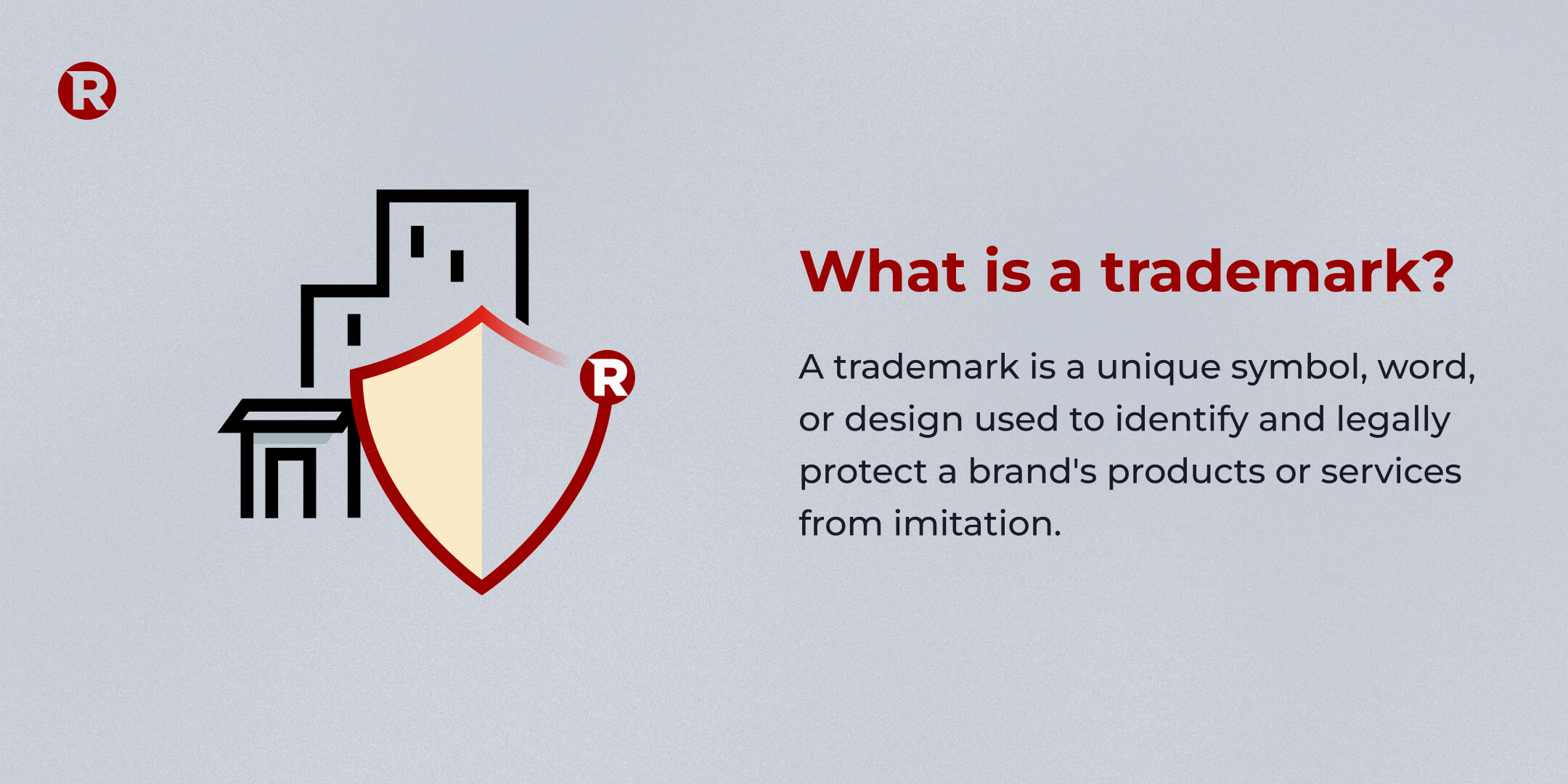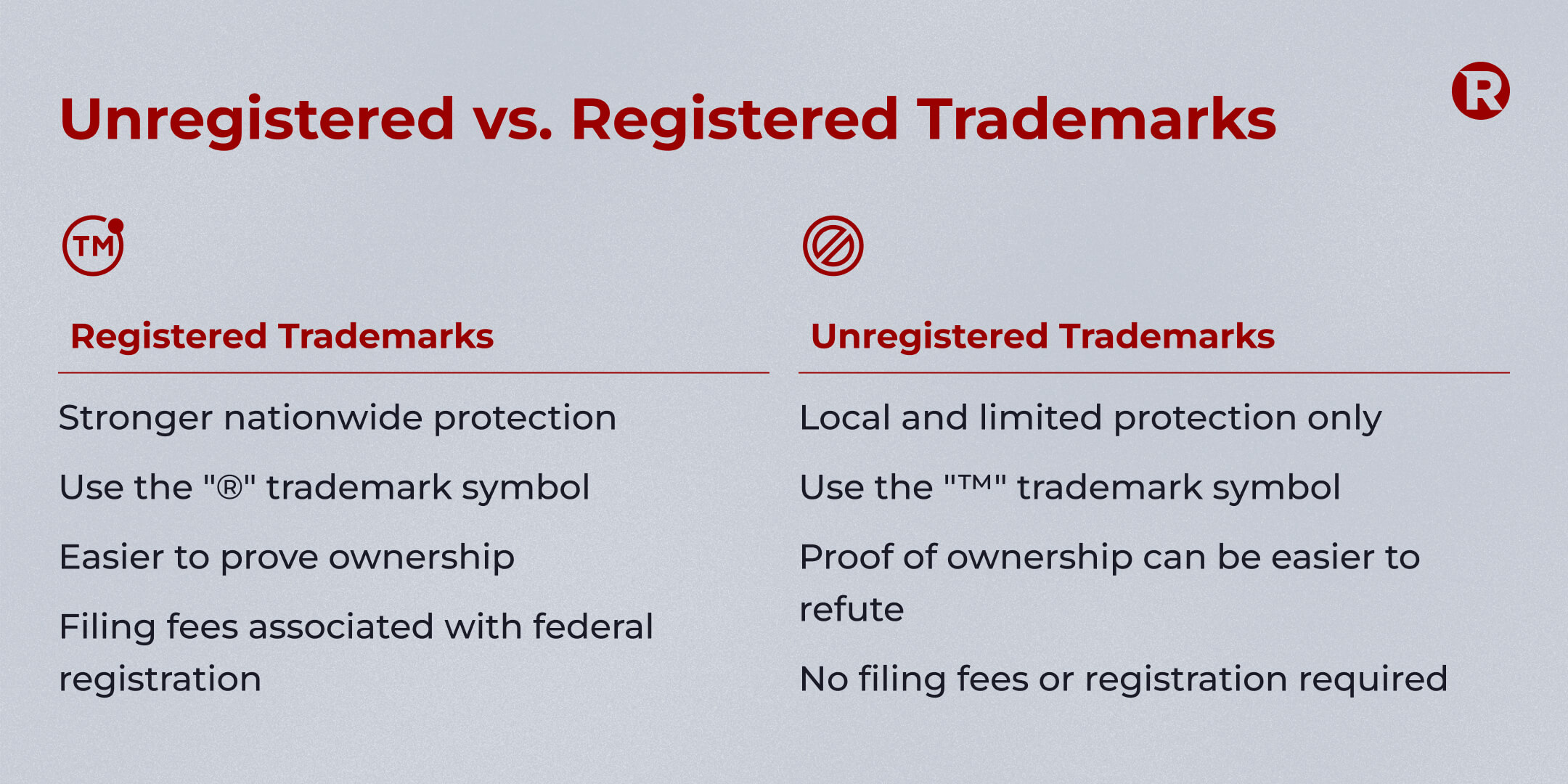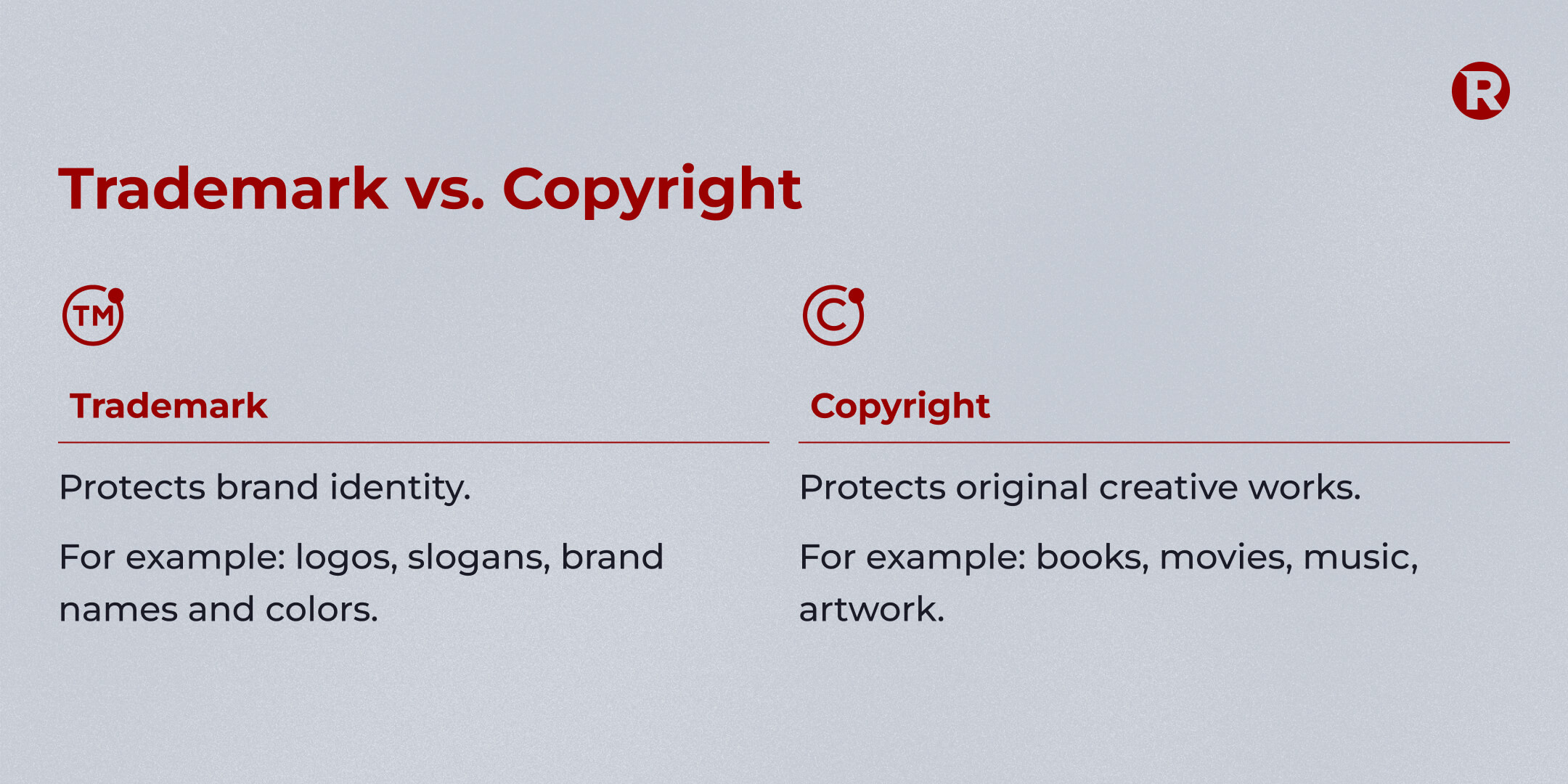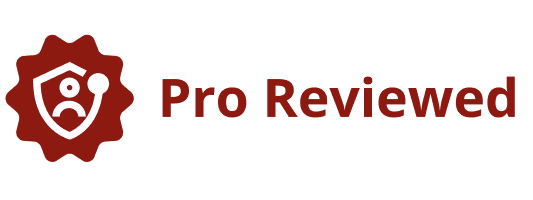A trademark is a brand name or logo used to identify and legally protect a brand's products or services from imitation.


At its most basic, the answer to “what is a trademark?” is simple: a trademark is a unique sign, design, symbol, word, or overall intellectual property that works as an identifier that people associate with a brand or company. It’s a service mark that protects a business's brand identity against others using it without permission and helps consumers trust that the products or services they’re buying are real and of good quality.

Understanding How Trademarks Work
Think of NIKE or the McDonald's golden arches. When you see them, you instantly know the brand and what to expect from their products or services. A service mark like this is vital for businesses to build a strong connection with their consumers and stand out from competitors.
Trademarks aren’t new — they’ve been used for a long time, even back in ancient times. Today, there are trademark laws - both in the U.S. and around the world - helping businesses keep their identifiers and intellectual property safe by giving exclusive rights to them.
Types of Trademarks

There are two types of trademarks: registered and unregistered. Both have some level of legal protection, but they differ significantly in terms of scope and reliability.
Unregistered Trademarks
Unregistered trademarks provide limited, local protection. Simply using a trademark—such as adding the "™" symbol to your business name, logo, slogan, or other brand identifiers—signals that you’re claiming the trademark. However, without formal registration, ownership can be harder to prove, and protection is more easily challenged.
Unregistered trademarks also limit your ability to take legal action. You can only pursue claims in state courts, and protection typically applies only within your local area.
Registered Trademarks
Federally registered trademarks provide stronger and nationwide protection. The registration process includes a formal search that helps ensure you’re not infringing on an existing trademark. This reduces the risk of unknowingly violating someone else’s trademark rights, which could lead to expensive legal disputes.
Although registering a trademark involves upfront costs, it’s often a worthwhile investment. Registration provides a clear paper trail, making ownership easier to defend. Moreover, the costs of legal issues or potential rebranding can far exceed the initial costs of registration.
Why Register a Trademark
If your business operates in multiple states or at a national level, then you might need a registered trademark to protect your intellectual property. Here are reasons to consider a registered trademark.
-
You make sure that you can use the name or logo that you want to use. Before you apply to register a trademark, it’s best to search for the mark in the United States Patent and Trademark Office’s (USPTO) database and the internet to see if any other businesses are already using the same or similar service marks. This helps you not to use an existing trademark and avoid legal trouble.
-
You keep others from making money off your trademark. If someone else tries to use your trademark symbols, you can take legal action to stop them and get compensation if they’ve hurt your business, as well as prevent them from using it in the future. You have this trademark protection locally with an unregistered trademark, but registering your trademark gives you this protection nationally -- which can be important if you are planning on growing your business.
-
It is easier to prove that the trademark is yours. If there's a legal dispute, the USPTO's Trademark Trial and Appeal Board (TTAB) will decide who was the first to use a trademark. Having a registered trademark gives you an advantage: the trademark registration process records the date you first used it. Without that, you may only have limited or unreliable evidence. It also helps to have documentation of your trademark registration with the federal government if you need to send a legal warning (a Cease and Desist Letter) to someone using it without your permission.
-
You show the public that you own the trademark. When you register your trademark, you can add a “®” next to your trademark symbols — your name, logo, slogan, etc. This shows that your trademark is officially registered and that you’re prepared to protect it.
Trademark vs. Copyright

Trademarks and copyrights are frequently confused, but they are not the same. Both are types of intellectual property protection, but each is designed for a different purpose.
| Trademark | Copyright | |
|---|---|---|
| Purpose | Protects a brand's identity (name, logo, slogan, etc.) so that consumers can tell differen t businesses and their products or services apart. | Protects original creations like books, music, art, and software. It gives authors and artists the right to reproduce, share, and display their work. |
| Scope | Applies to the specific products or services a business offers. For example, the Nike "swoosh" logo is trademarked for sports gear. | Applies to the way an idea is expressed, not the idea itself. A book may be copyrighted, but not its basic plot. |
| Duration | Can last forever if it's used and maintained. In the U.S., it needs to be renewed five years after the federal trademark registration date and at every ten-year anniversary. | Lasts for the author's life plus 70 years. After that, the work enters the public domain and can be used by anyone. |
| Registration | You can get some legal protection for a trademark just by using it, but registering it with the USPTO gives you more legal benefits, like nationwide protection and the ability to sue in federal court. | Copyright protection starts automatically when a work is created, but to sue for copyright infringement, you need to register it with the U.S. Copyright Office. |
What Can Be Trademarked?
Trademarks are incredibly flexible. Under U.S. law, practically everything can be registered as a trademark, as long as it identifies a source of goods or services, and is used in commerce. This can include:
- Names.
- Logos.
- Slogans.
- Colors.
- Sounds.
- Packaging.
What Can't Be Trademarked?
Despite their flexibility, there are limits to what trademarks can cover. Examples of things you can't trademark include:
- Generic terms (like "computer" for a computer business).
- Descriptive marks (like "Cold and Creamy" for ice cream).
- Deceptive marks (marks that lie about the product).
- Functional elements (like the shape of a tool).
Not All Trademarks Receive the Same Level of Protection.
The strength and scope of trademark protection depend on how distinctive a mark is. The USPTO considers several factors to determine this strength, with arbitrary or fanciful marks receiving the most protection, while generic marks cannot be protected at all.
- Arbitrary and fanciful trademarks get the most protection. These marks are highly distinctive, even if they use common words in unique ways. For example, "Apple" is an arbitrary mark in the context of electronics, and fanciful marks, like "EXXON," "VERIZON," or "KODAK," are entirely made-up words.
- Suggestive marks also receive strong protection, though less than arbitrary or fanciful marks. These marks hint at the product or service but require some imagination to make the connection. Examples include "JAGUAR" for cars and "COPPERTONE" for tanning lotion.
- Descriptive and generic terms typically cannot be protected under trademark law. However, if a descriptive trademark is used over a long period (often five years or more) and consumers begin to associate it with a specific company rather than the product itself, it may qualify for registration with the USPTO.
Do I Need a Lawyer to Register My Trademark?
The USPTO requires attorney representation for any business owner without US citizenship.
If you are a US citizen, you don’t legally need a lawyer to register a trademark. However, if you don't know how to file a trademark, there are many good reasons to use a lawyer in the application process:
- Understanding the process: registering a trademark has many complicated steps. A lawyer can guide you through each one, making sure everything is done correctly -- minimizing extra time and money you may spend on mistakes.
- Conducting a trademark search: before you apply, it’s important to check if your trademark is already being used. A trademark lawyer can do this search and help you understand the results.
- Avoiding common mistakes: many applications are rejected because of simple mistakes. This can result in paying filing fees more than once. A lawyer can usually help you avoid that kind of situation.
- Responding to issues: if the USPTO finds problems with your application, a trademark lawyer can respond effectively and address any concerns.
- Protecting your trademark: a lawyer can help monitor and protect your trademark from being used by other business owners, as well as assist with any legal issues that arise.
Basically, while it is possible for US citizens to register a trademark on your own, having legal help can make the process much easier, save you time, and help you avoid expensive mistakes.
Final Thoughts: What is a trademark?
Now the question “what is a trademark?” has been answered for you, the next step is to start the process to become a trademark owner: Rocket Lawyer Trademark Services can help you with that.
Summary
|

At Rocket Lawyer, we follow a rigorous editorial policy to ensure every article is helpful, clear, and as accurate and up-to-date as possible. This page was created, edited and reviewed by trained editorial staff who specialize in translating complex legal topics into plain language, then reviewed by experienced Legal Pros—licensed attorneys and paralegals—to ensure legal accuracy.
Please note: This page offers general legal information, but not legal advice tailored for your specific legal situation. Rocket Lawyer Incorporated isn't a law firm or a substitute for one. For further information on this topic, you can Ask a Legal Pro.
Disclosures
- This page offers general legal information, not legal advice tailored for your specific legal situation. Rocket Lawyer Incorporated isn't a law firm or a substitute for one. For further information on this topic, you can Ask a Legal Pro.